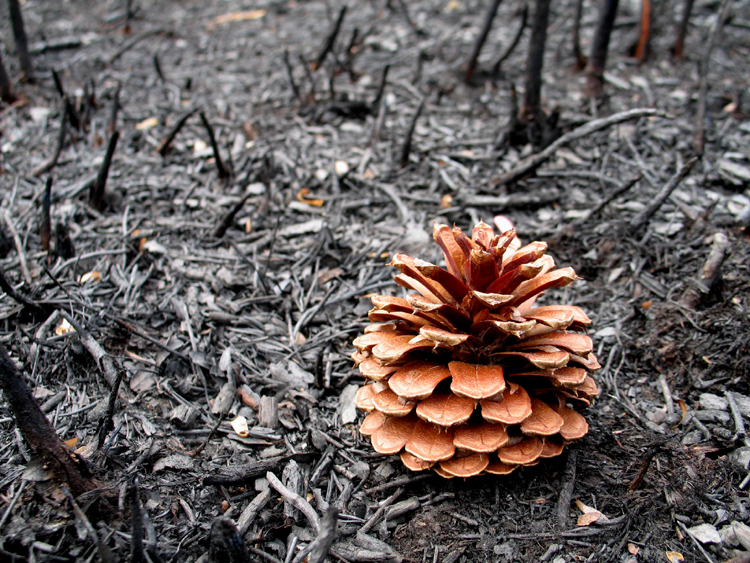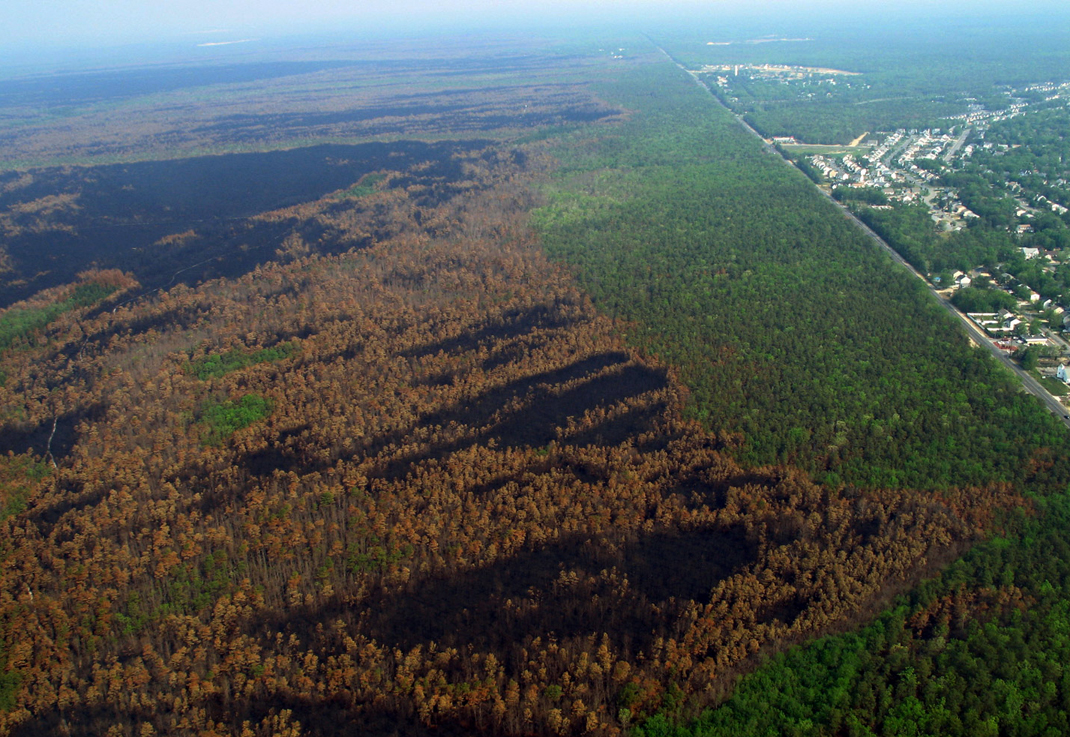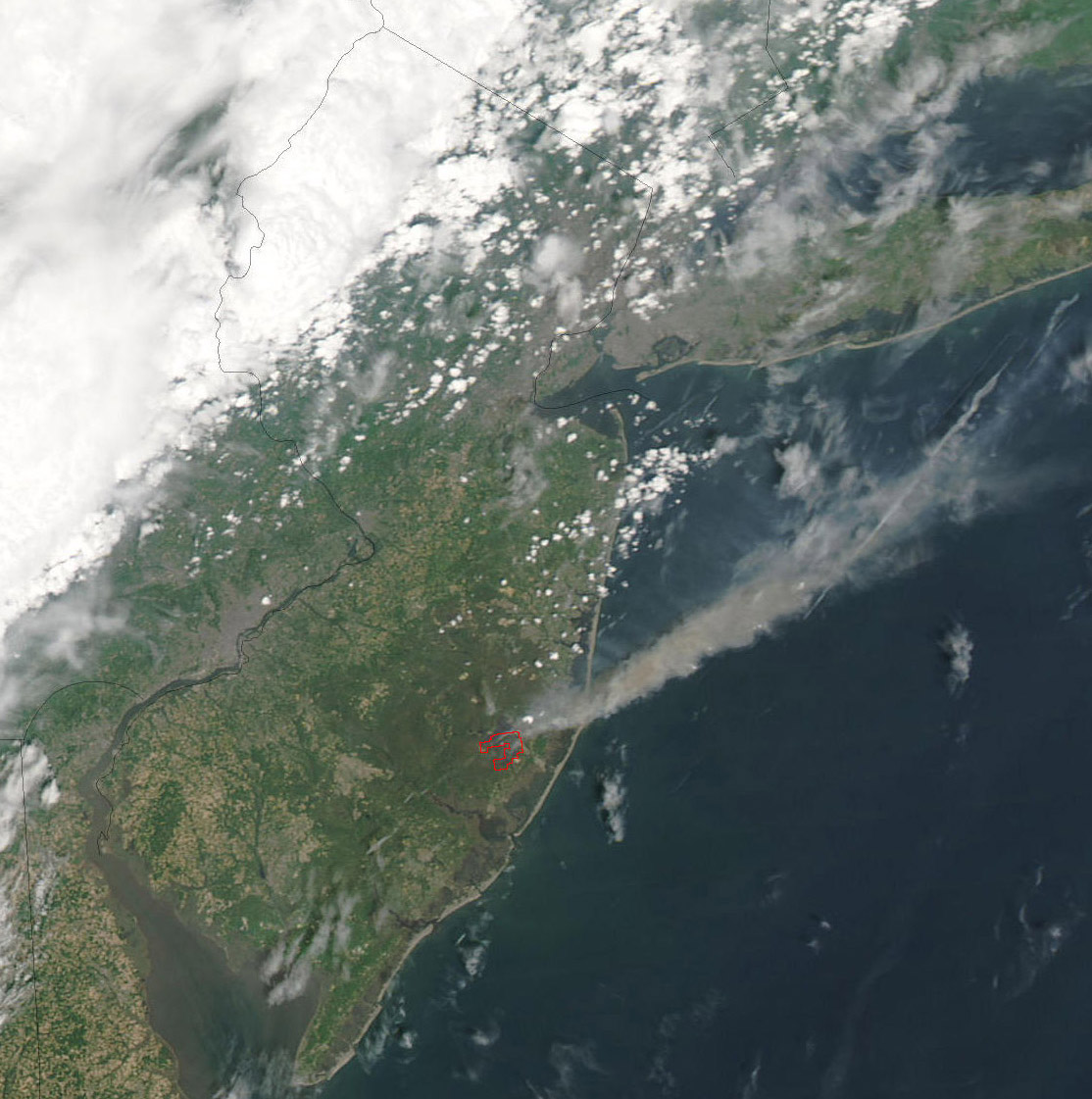Wildfire has shaped the Pine Barrens ecosystem for thousands of years. The plants that are found here have evolved to survive in the Pinelands’ highly acidic, nutrient poor and fire-prone conditions. Wildfires were common, especially during the summer months, before modern human cultures began suppressing them.
Many native species in the Pinelands, like the Pitch Pine, have developed strategies for survival in these harsh conditions. Over time and across the landscape, wildfires can help create open areas of the forest where we find some of our most beautiful and interesting wildflowers. Over the last century, fire suppression has changed the scale and frequency of this disturbance and the role in plays in succession. The vast amount of fire suppression in the Pinelands impacts the survival of herbaceous species of plants and may eventually lead to a change in composition of tree species in the Pinelands.
Wild Lupin was described in 1911 as “one of the most conspicuous” native wildflowers of south Jersey’s outer coastal plain, and as “frequent” in a 1983 publication, but today is listed as a “species of concern” by the state Natural Heritage Program due to its increasing rarity. Similarly, Virginia False Gromwell is thought to have been lost from the state and is now listed as endangered by the Natural Heritage Program.
The state of New Jersey is challenged with protecting New Jersey residents from catastrophic wildfires and does this mainly through the use of prescribed burns which take place in the cooler winter months. Changes in forest composition from Pine dominated forest to Oak dominated forest has already occurred in the Pinelands around developments that have suppressed fire for decades. This fundamental change can occur in other parts of the Pinelands and will be gradual and only visible over a period of several decades or more. The long term ecological impacts of burning Pinelands forests in the winter are not well understood. It is critical to understand how plant communities respond to winter burning so that fire can be used more effectively as a management tool.
The Prescribed Burn law passed by Governor Murphy allows for the use of prescribed burns for ecological goals in addition to fire safety, and offers greater protections to private land owners that look to use prescribed burns on their properties. This new law can increase the opportunities to use fire as a management tool and improve the stewardship of Pinelands forests.


